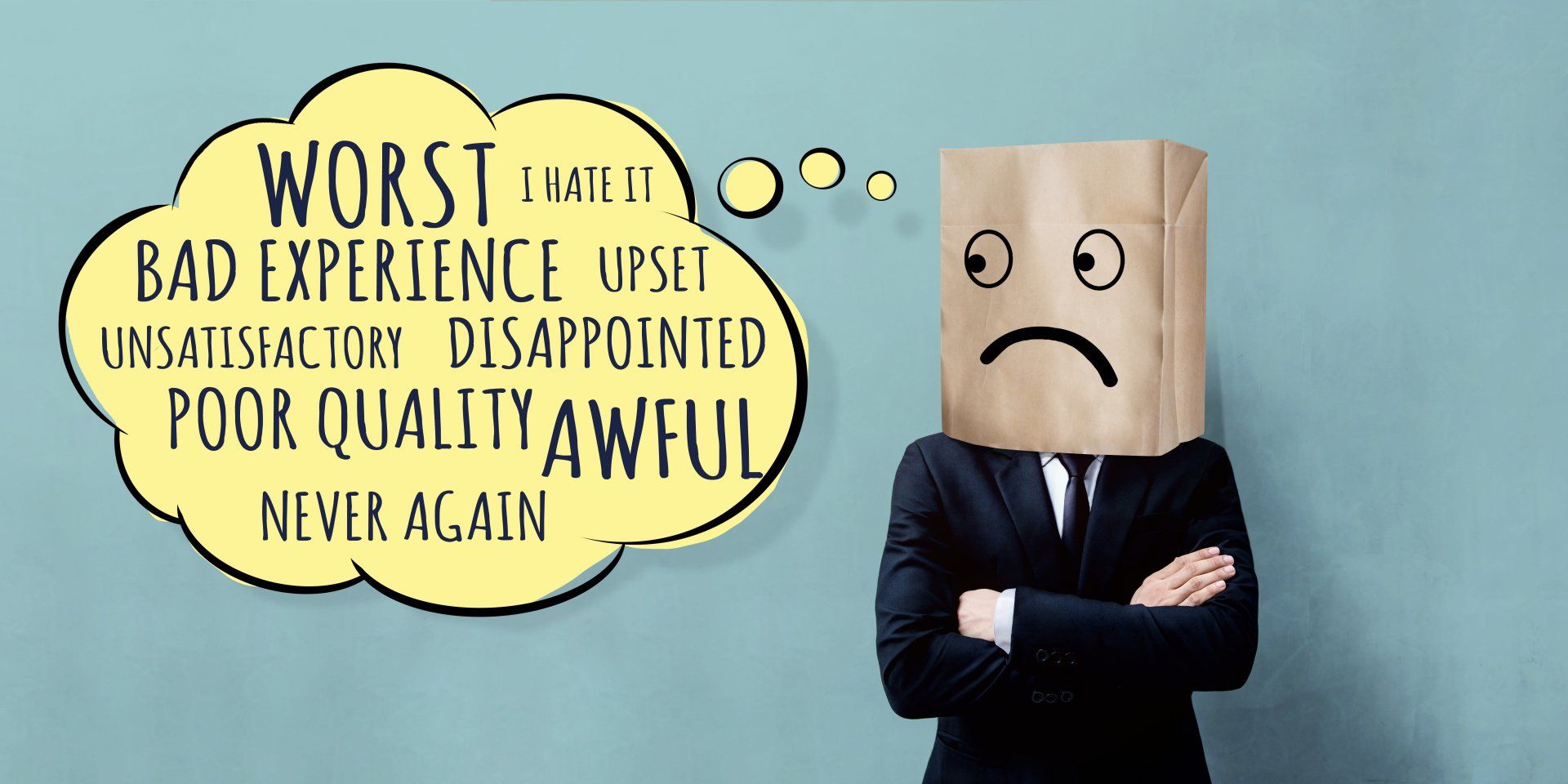Blog Layout
Building Your Own Website? Here are 5 Important Things to Consider
Lisa Dye • Sep 07, 2019
If you’ve decided to build your own website from scratch, I applaud you for your brave decision to do so!
DIY website builders have a lot to offer, but is it better to go this route than to invest in a professionally-built website?
Well, that depends on your knowledge of website design and development. If you know what it takes to build a successful website, you’ll be fine.
If not, brace yourself for this monster of a task. There are a lot of working parts to the process that you’ll have to keep in mind.
Otherwise, you might set yourself up to fail.
Most self-built websites are a marketer’s worst nightmare. In what seems like a conscious attempt to save money, some entrepreneurs do more harm to their brands than good by building their websites on their own.
Oftentimes, the final product looks like a cheaply made eyesore with a poorly built website structure.
While DIY websites might seem like a great investment, they pose a huge risk to the success of your brand.
There’s a possibility that your conversion rates will suffer, your website won’t be visible enough for your target audience to find you, and the quality of your website will devalue the quality of your brand.
As a result, this option ends up being a waste of time and money in the long run. It also tends to have the opposite effect on the intended results.
Taking all of that into account, are you 100% sure of your website-building skills? Can you confidently say that you know what you’re doing? With all that’s at stake, you might want to think long and hard about your decision.
Your website needs to hit a home run in more ways than one. Here’s a rundown of the different working parts of a successful website.
Branding
Your website is one thing, but your branding strategy is a completely different ball game.
Branding has the power to resonate in a person’s mind for years. The Apple logo will forever be embedded in our minds. It just goes to show that Apple accomplished what they set out to do with their branding strategy.
The memorability of their brand identity plays a role in their global popularity. In a perfect world, that’s the same effect you’ll want to leave on your target audience.
Star-quality branding is critical to your brand’s success. Needless to say, it’s worth the investment.
Your web and print branding materials should have a cohesive look and feel across all mediums. That includes your website, your business cards, your signage, and your marketing collateral.
With professional branding, people will take your business more seriously.
The Infinity Group can help you take your branding strategy to the next level. Contact us to find out how!
Design Aesthetics
Appearance is everything. Considering that we humans are visual beings by nature, many of us are guilty of judging a book by its cover.
The same goes with websites.
When a first-time visitor lands on your website, you only get one chance to make a first impression. That’s why you’ll want to use that as an opportunity to blow them away.
The best way to do that is by offering a “WOW experience,” and the look and function of your website factors into that.
A lot of DIY websites look like they’ve been thrown together. As we mentioned before, this could have a detrimental impact on your brand.
The design of your website should be clean, simple, and easy to navigate (as a general rule of thumb).
Your branding materials should also blend in with the appearance and theme of your website.
Want a professional’s opinion on your website? Our design team can give you advice on whether or not you’re making the right design decisions. Contact us today.
Your Domain Name
Choose your domain name wisely. Not only should it be easy to say and spell, but it should also be as short as possible.
It’s also important to select a domain name that matches closely with your business name. We know that in some cases, this is hard to do when multiple companies share a similar name.
Just try to include your company name in some way, form, or fashion. We also recommend that you go with a .com domain when possible. It’s more preferable than all the other extensions.
Ready to puchase a domain? Click here to get started.
Search Engine Optimization
The quickest way to get found on Google is by optimizing your website for maximum results. In the marketing world, we call this search engine optimization (SEO).
Lucky for you, most DIY builders have built-in settings for SEO. This should make it easier for you to optimize your website. Just remember to be thorough in your efforts.
There are two different types of SEO: on-page and off-page. On-page SEO focuses on the structure and function of your website.
Common on-page optimization practices include:
● The use of meta titles/descriptions, and alt-tags on your web pages
● Easy-to-navigate menu structure
● The installation of an SSL certificate
● A mobile-friendly design
Off-page SEO has to do with the external factors that are increasing your visibility on the web (e.g., social media, Google Maps, local directories, endorsements from high-authority websites, etc.).
Does this sound like gibberish to you? Not to worry. If you’d like, we can explain it to you further in layman’s terms over a call. We’re also available to provide personalized SEO advice for your website.
Content
Content is STILL king. With that in mind, the lack of a solid content strategy is a huge mistake.
Another thing to note is that content and SEO go hand in hand. If you want your content to appear in Google search for certain search terms, your content will need to be SEO-optimized.
Make sure that it’s not overly optimized to the point where it sounds robotic. This usually happens when a company produces content for the search engines. Where in actuality, you should write content for the reader with SEO in mind.
To DIY, or Not to DIY?
DIY websites aren’t a bad thing if you know how to approach it the right way. One wrong decision could cost yourself a ton of high-quality leads!
Not to mention, DIY website building can be a time-consuming experience. Even after you build it, you’ll have to take the time to maintain it.
Do you really have the bandwidth to handle this project on your own?
Before you do anything, you’ll want to ask yourself if this is where you time is best spent, or if it makes more sense to hire a professional.
Whether you've decided to try a DIY solution or you want a custom design, we have solutions that meet your needs. Contact us today for more information.
Share
Tweet
Share
Mail

By Lisa Dye
•
26 Jul, 2019
Let me guess. You got a HORRIBLE review from a ticked off customer, and you’re trying to make it go away. First things first: Breathe! We know that your business is your baby, and you worked hard to get it to where it is today. Don’t worry. Customer attacks happen to the best of us. As tempting as it might be to punch a wall, don’t lose your cool. We can fix this. I can’t promise you that Google or the third party review site will take it down, but I’ll tell you one thing: the BEST defense is a GOOD offense! Higher Ratings Equal Higher Rankings As a local business, local SEO plays a huge role in the average local marketing strategy. It’s a big deal, because it can maximize your visibility on some big-time platforms and directories, including: Google My Business ● Facebook Local ● YellowPages ● Healthgrades It also increases your exposure on smaller directories you might not know about, and as you know, you can never have too much exposure. Reviews are just as important to your local SEO strategy as local SEO is to your overall marketing strategy. The higher your ratings, the higher your business will appear in search queries relating to your product or service offerings. Plot Twist: Bad Reviews Aren’t Always a Bad Thing All publicity is good publicity, including bad reviews. The thing is, you can learn a lot from a bad review. Instead of seeing it as a negative, look at it as an opportunity to grow from past mistakes. There’s no such thing as a perfect business. And guess what? People realize it. They’ll give businesses the grace to redeem themselves and right their wrongs. Take advantage of that. How to Handle a Bad Review...Like a Boss One bad review won’t put you out of business. If you approach it with the right attitude, the person who wrote the review might have a change of heart. Reviewers—in some cases—are willing to update, or take down a review when their issues have been resolved. That’s going to require some damage control on your part (or your online reputation management team). We’ve put together a roundup of best practices to follow when handling a bad review. Step #1: Respond If you plan on ignoring that bad review like it’s not there, you might want to rethink your strategy. They say that no response is a response. Your approach to a bad review is a direct reflection of your approach to conflict resolution. By pretending that it doesn’t exist, it partially represents your attitude towards customer satisfaction. That’s why it’s just best to respond. Your team needs to acknowledge their awareness of that customer’s issue, and reassure the customer that they’d like to turn the situation around for the better. Most importantly, you’ll want to encourage the reviewer to elaborate on the matter with your team. Don’t respond with the intention of dismissing the reviewer’s claim. Placing the blame on the customer is not a good look. Make it clear that your team comes in peace. Apologize for their experience (even if the allegations sound false), and leave your email address or phone number in the response to open up the dialogue. Don’t let too much time go by before you respond. Also, don’t make the response longer than it has to be. A short and prompt reply would be your best bet. The goals of your response are to a) take the conversation offline, and b) gather more information about the situation. Your response is an important step of the process, because the information will help you determine the next big question. Step #2: Make Sure That the Feedback Is Legitimate Every once in a while, there’s a possibility you might come across a fake review. Fake reviews are a ploy that competitors and angry employees use to ruin your reputation. A review also counts as fake when the person who wrote it has never purchased your products or services. For every bad review you receive, you’ll want to investigate the issue to make sure that reviewer is an actual customer. If it’s a fake review, you can flag it as such and request that it be taken down. Oftentimes, that’s the ONLY reason that the moderators of the review site will remove a review (unless the reviewer takes it down). Step 3: Put On Your Detective Hat If you can confirm that the review is real, take immediate action to get your facts straight about that customer or patient. Do some digging to find out more about their purchase history, their previous dates of contact, and the date and time that they proclaimed to have the bad experience. This information can unlock some important clues pertaining to your investigation. Once you have the information you need, you can use your best judgment on how to rectify the issue and find a happy medium with that customer. When In Doubt, Drown Out the Bad with the Good! Reviews are full of surprises. You don’t always know what you’re going to get or when you’re going to get them. When you receive a bad review, remember that it’s not the end of the world. Just don’t have too many at once. That can have a damaging impact on your reputation. The best thing you can do is to drown out the bad reviews with positive ones. Believe me, it works. Bad reviews pop up when you least expect it, so it’s important that you NEVER let your guard down. Stay vigilant in your efforts to earn new reviews. Make review solicitation an ongoing task by incorporating it into your email (or SMS) marketing strategy. One thing you can do is, create a review request for your customers in the form of an electronic survey. The shorter the survey, the better! I’ll tell you why. The average customer has a short attention span . You will bore them to death with a long, drawn-out survey. Try to keep the questions at a maximum of 10. Reserve one question of the survey for general feedback, and give your customers enough space to write a paragraph-length response for that question. Automated software can push out that one particular response to your website, and to other third-party review sites. And voilà, there goes your review strategy. With enough survey responses, you can hit the review jackpot. Don’t worry about the reviews being good or bad. With a solid online reputation management strategy, you can pivot your responses like a pro as the reviews come. Get Your Defense Team In Place Review solicitation doesn’t have to be a chore that you have to add to your never-ending to-do list. Our team will gladly step in as your task force to start the initiative, and to keep it going. We offer solutions that are designed to keep the reviews rolling in, ensuring that solicitation is one less thing you have to worry about. If there’s one thing you don’t have to question, it’s the fact that we’ve got your back here at The Infinity Group. We’re prepared to do what it takes to protect your good name. Contact us today to find out more about our online reputation management services .
© 2021 All Rights Reserved | The Infinity Group LLC | Privacy Policy



